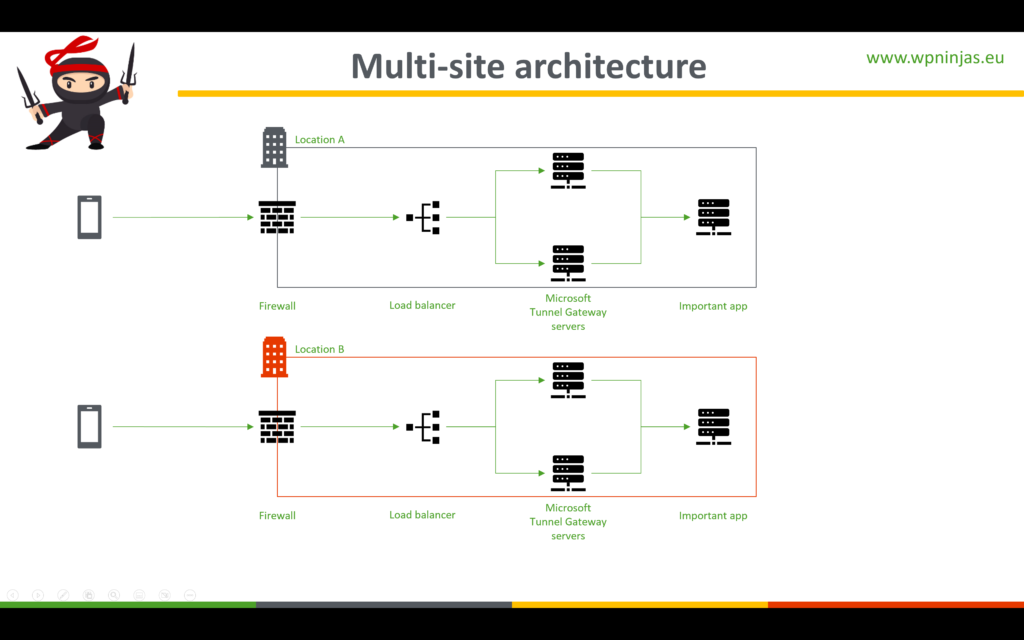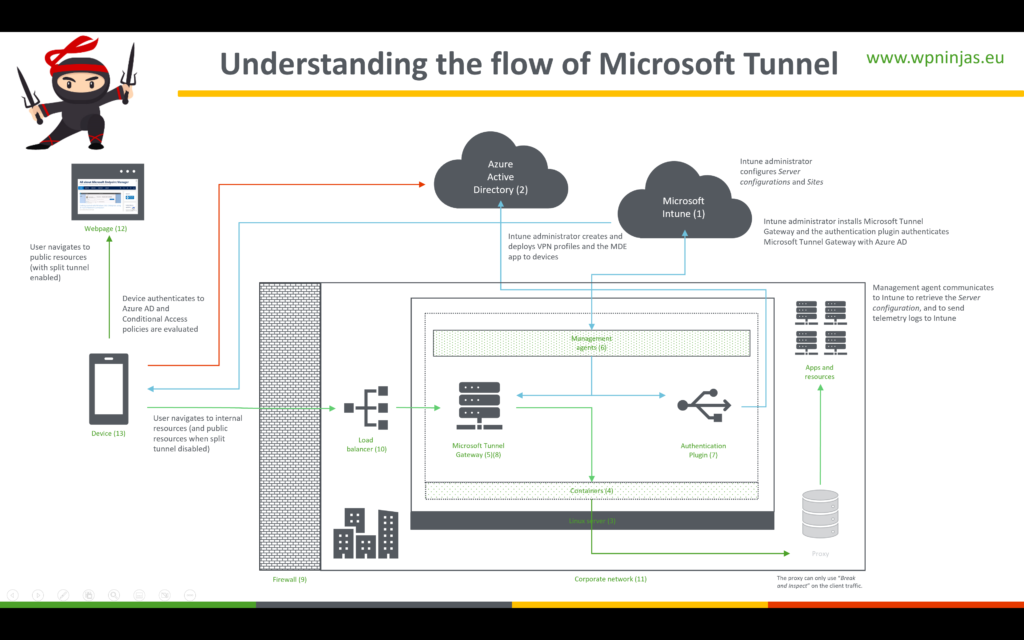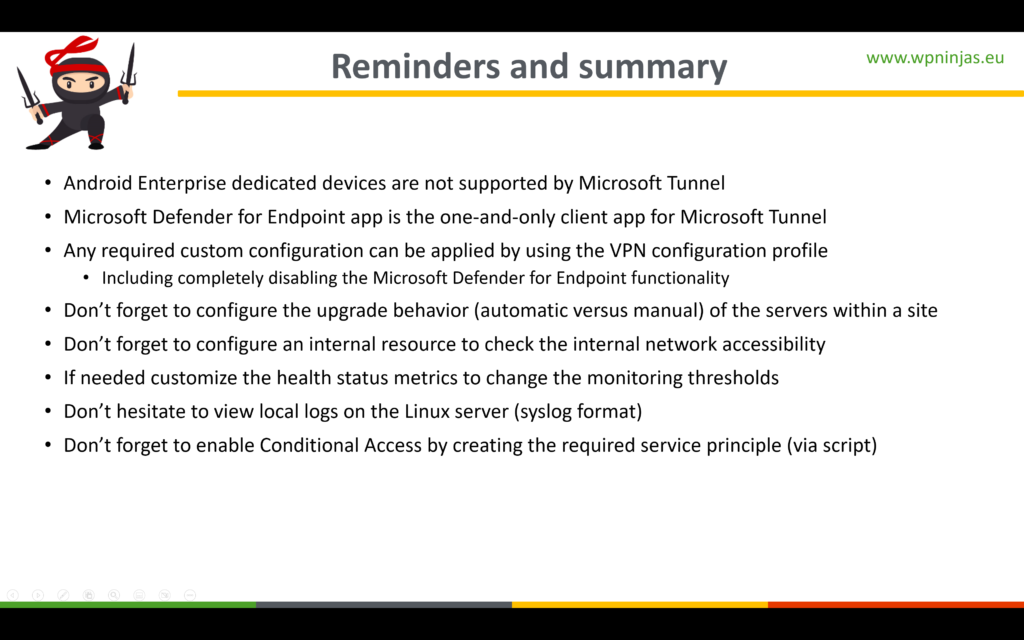This week a few shorter posts, as my posts this week are extensions of my sessions at the Workplace Ninja Summit 2022. At the summit I did my first session about Creating the path for mobile devices to on-premises resources. During that session I shared information around the architecture and flow of Microsoft Tunnel, I zoomed in on getting up-and-running with Microsoft Tunnel and showed getting insight of Microsoft Tunnel. This post will provide a quick summary of that session by quickly showing the architecture and flow of Microsoft Tunnel and by showing the summary and reminders. The slides (PDF) of that session are available for download here.

Architecting Microsoft Tunnel
An important part of creating the Microsoft Tunnel infrastructure is a solid architecture. In most cases that implies the need for multiple Microsoft Tunnel Gateway servers (as shown below in Figure 2). To get started with the need for multiple servers, have a look at this post.

Flow of Microsoft Tunnel
An important part of creating a Microsoft Tunnel infrastructure is understanding the traffic flows. There are many different interactions with The picture below (in Figure 3) provides an overview of that architecture. It also shows the main interactions and flows that are important for the Microsoft Tunnel.

Installing and configuring Microsoft Tunnel
The information about installing and configuring the Microsoft Tunnel is important to get it up-and-running. To get started with the installation, have a look at this post and the Microsoft docs.
Interacting with Microsoft Tunnel
The interaction with the Microsoft Tunnel is important for understanding the configuration and for troubleshooting any potential issues. For more information have a look at this post and the Microsoft docs.
Reminders and summary
When starting with Microsoft Tunnel a few important things should not be forgotten. That was summarized at the end of the session and capture in the last slide, as shown below in Figure 4.

